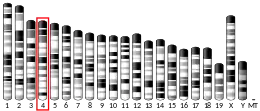| MMEL1 | |||||||||||||||||||||||||||||||||||||||||||||||||||
|---|---|---|---|---|---|---|---|---|---|---|---|---|---|---|---|---|---|---|---|---|---|---|---|---|---|---|---|---|---|---|---|---|---|---|---|---|---|---|---|---|---|---|---|---|---|---|---|---|---|---|---|
| Identifiers | |||||||||||||||||||||||||||||||||||||||||||||||||||
| Aliases | MMEL1, MMEL2, NEP2, NEPII, NL1, NL2, SEP, membrane metallo-endopeptidase-like 1, membrane metalloendopeptidase like 1 | ||||||||||||||||||||||||||||||||||||||||||||||||||
| External IDs | OMIM: 618104 MGI: 1351603 HomoloGene: 22778 GeneCards: MMEL1 | ||||||||||||||||||||||||||||||||||||||||||||||||||
| |||||||||||||||||||||||||||||||||||||||||||||||||||
| |||||||||||||||||||||||||||||||||||||||||||||||||||
| |||||||||||||||||||||||||||||||||||||||||||||||||||
| |||||||||||||||||||||||||||||||||||||||||||||||||||
| |||||||||||||||||||||||||||||||||||||||||||||||||||
| Wikidata | |||||||||||||||||||||||||||||||||||||||||||||||||||
| |||||||||||||||||||||||||||||||||||||||||||||||||||
Membrane metallo-endopeptidase-like 1 is a protein that in humans is encoded by the MMEL1 gene.[5]
Function
The protein encoded by this gene is a member of the neutral endopeptidase (NEP) or membrane metallo-endopeptidase (MME) family. Family members play important roles in pain perception, arterial pressure regulation, phosphate metabolism and homeostasis. This protein is a type II transmembrane protein and is thought to be expressed as a secreted protein. This gene is expressed mainly in testis with weak expression in the brain, kidney, and heart.
References
- 1 2 3 ENSG00000277131 GRCh38: Ensembl release 89: ENSG00000142606, ENSG00000277131 - Ensembl, May 2017
- 1 2 3 GRCm38: Ensembl release 89: ENSMUSG00000058183 - Ensembl, May 2017
- ↑ "Human PubMed Reference:". National Center for Biotechnology Information, U.S. National Library of Medicine.
- ↑ "Mouse PubMed Reference:". National Center for Biotechnology Information, U.S. National Library of Medicine.
- ↑ "Entrez Gene: Membrane metallo-endopeptidase-like 1".
Further reading
- Whyteside AR, Turner AJ (July 2008). "Human neprilysin-2 (NEP2) and NEP display distinct subcellular localisations and substrate preferences". FEBS Letters. 582 (16): 2382–6. doi:10.1016/j.febslet.2008.05.046. PMID 18539150.
- Danoy P, Wei M, Johanna H, Jiang L, He D, Sun L, Zeng X, Visscher PM, Brown MA, Xu H (October 2011). "Association of variants in MMEL1 and CTLA4 with rheumatoid arthritis in the Han Chinese population". Annals of the Rheumatic Diseases. 70 (10): 1793–7. doi:10.1136/ard.2010.144576. PMID 21784728. S2CID 7394115.
- Natunen T, Helisalmi S, Vepsäläinen S, Sarajärvi T, Antikainen L, Mäkinen P, Herukka SK, Koivisto AM, Haapasalo A, Soininen H, Hiltunen M (2012). "Genetic analysis of genes involved in amyloid-β degradation and clearance in Alzheimer's disease". Journal of Alzheimer's Disease. 28 (3): 553–9. doi:10.3233/JAD-2011-111109. PMID 22027013.
- Hirschfield GM, Liu X, Han Y, Gorlov IP, Lu Y, Xu C, Lu Y, Chen W, Juran BD, Coltescu C, Mason AL, Milkiewicz P, Myers RP, Odin JA, Luketic VA, Speiciene D, Vincent C, Levy C, Gregersen PK, Zhang J, Heathcote EJ, Lazaridis KN, Amos CI, Siminovitch KA (August 2010). "Variants at IRF5-TNPO3, 17q12-21 and MMEL1 are associated with primary biliary cirrhosis". Nature Genetics. 42 (8): 655–7. doi:10.1038/ng.631. PMC 2929126. PMID 20639879.
- Carpentier M, Guillemette C, Bailey JL, Boileau G, Jeannotte L, DesGroseillers L, Charron J (May 2004). "Reduced fertility in male mice deficient in the zinc metallopeptidase NL1". Molecular and Cellular Biology. 24 (10): 4428–37. doi:10.1128/MCB.24.10.4428-4437.2004. PMC 400486. PMID 15121861.
- Huang JY, Hafez DM, James BD, Bennett DA, Marr RA (2012). "Altered NEP2 expression and activity in mild cognitive impairment and Alzheimer's disease". Journal of Alzheimer's Disease. 28 (2): 433–41. doi:10.3233/JAD-2011-111307. PMC 3320721. PMID 22008264.
- Hu Z, Xia Y, Guo X, Dai J, Li H, Hu H, Jiang Y, Lu F, Wu Y, Yang X, Li H, Yao B, Lu C, Xiong C, Li Z, Gui Y, Liu J, Zhou Z, Shen H, Wang X, Sha J (December 2011). "A genome-wide association study in Chinese men identifies three risk loci for non-obstructive azoospermia". Nature Genetics. 44 (2): 183–6. doi:10.1038/ng.1040. PMID 22197933. S2CID 5325489.
This article incorporates text from the United States National Library of Medicine, which is in the public domain.
This article is issued from Wikipedia. The text is licensed under Creative Commons - Attribution - Sharealike. Additional terms may apply for the media files.



